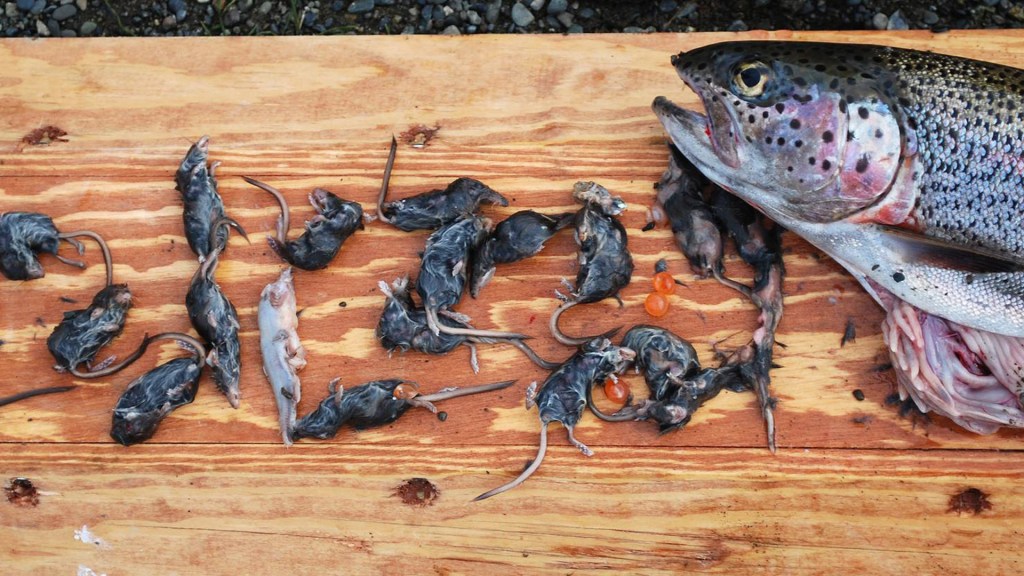If you’re a small mammal, it’s definitely not safe to go back in the water…
One of the most popular posts on Cool Green Science has been the story of rodent-eating trout at The Nature Conservancy’s Silver Creek Preserve. A trout research effort there confirmed that large brown trout were keying in on voles (small rodents that happened to be in the midst of a population explostion).
One trout had three freshly-eaten voles in its stomach, which seemed particularly gluttonous. Until it’s compared to this one.
Researchers conducting a trout study at the U.S. Fish and Wildlife Service’s Togiak National Wildlife Refuge in Alaska released this photo on its Facebook page last week. They wrote:
“This rainbow was caught on the Kanektok River during a rainbow trout project. It wound up being a mortality capture so it was cut open to see what it had been feeding on. Surprise! The answer was shrews, and a whole lot of them.”
By my count, this trout ate twenty shrews. Twenty.
There are a couple of really interesting points with this incidence.
For one thing, the rainbow trout was 19 inches (480 mm). That’s certainly a decent-sized fish, but as the researchers point, it’s “fairly pedestrian by Togiak standards.” It is hard to imagine a fish of this size consuming so many small mammals.
And the trout preyed on shrews, small insectivorous mammals that are interesting in their own right. Shrews are not rodents. Many rodent species – like the montane voles at Silver Creek – have periodic population explosions.
As every fly fisher knows, trout really key in on abundance: a mayfly hatch induces a feeding frenzy, as does a vole irruption.
But I can find no literature indicating shrew population explosions. As small predators, it seems hard to imagine them becoming as numerous as rodents. So how could a trout so effectively target shrews?
The staff at Togiak speculate: “How did so many shrews make it into one trout? It’s anyone’s guess but perhaps a nest by the river eroded, dumping all of the shrews into the water where this rainbow likely came away feeling like a lottery winner.”
That sounds as good an answer as any. But it would be interesting to look more into shrew ecology and see if there might be something else going on—a high density of shrews, or some shrew habit that trout have learned to exploit.
The Togiak National Wildlife Refuge looks like a fabulous place, a refuge with not only very big trout but also walrus and caribou and salmon lots of other cool critters. You can enjoy more photos of this place, and support the refuge’s conservation, by following Togiak NWR on Facebook.




that is cool!!